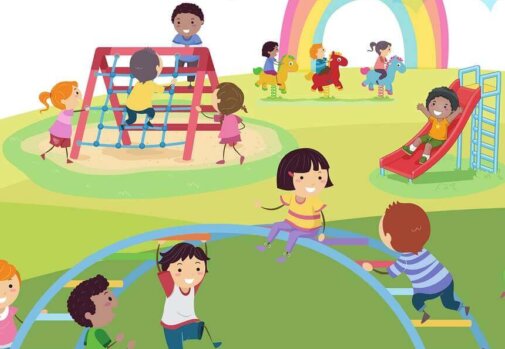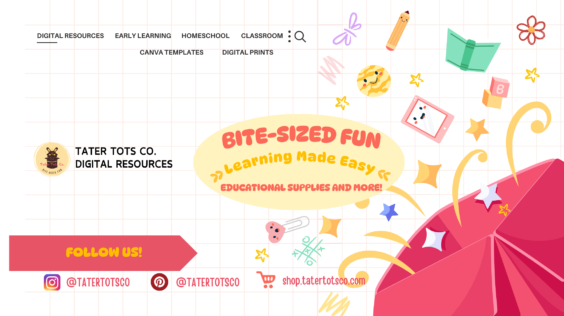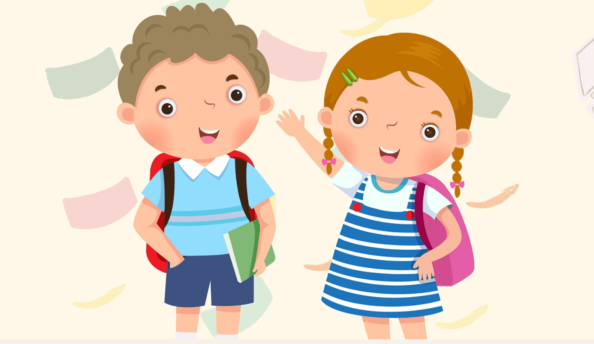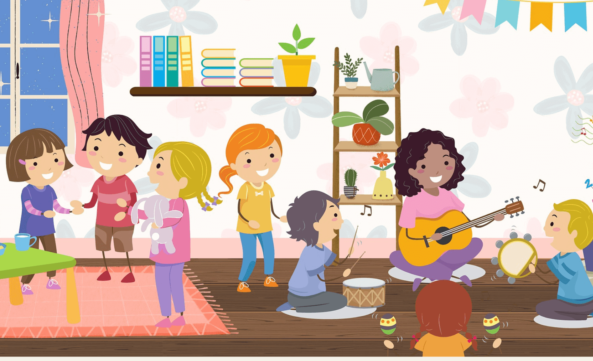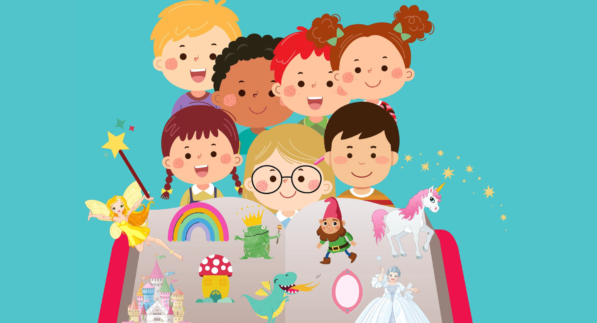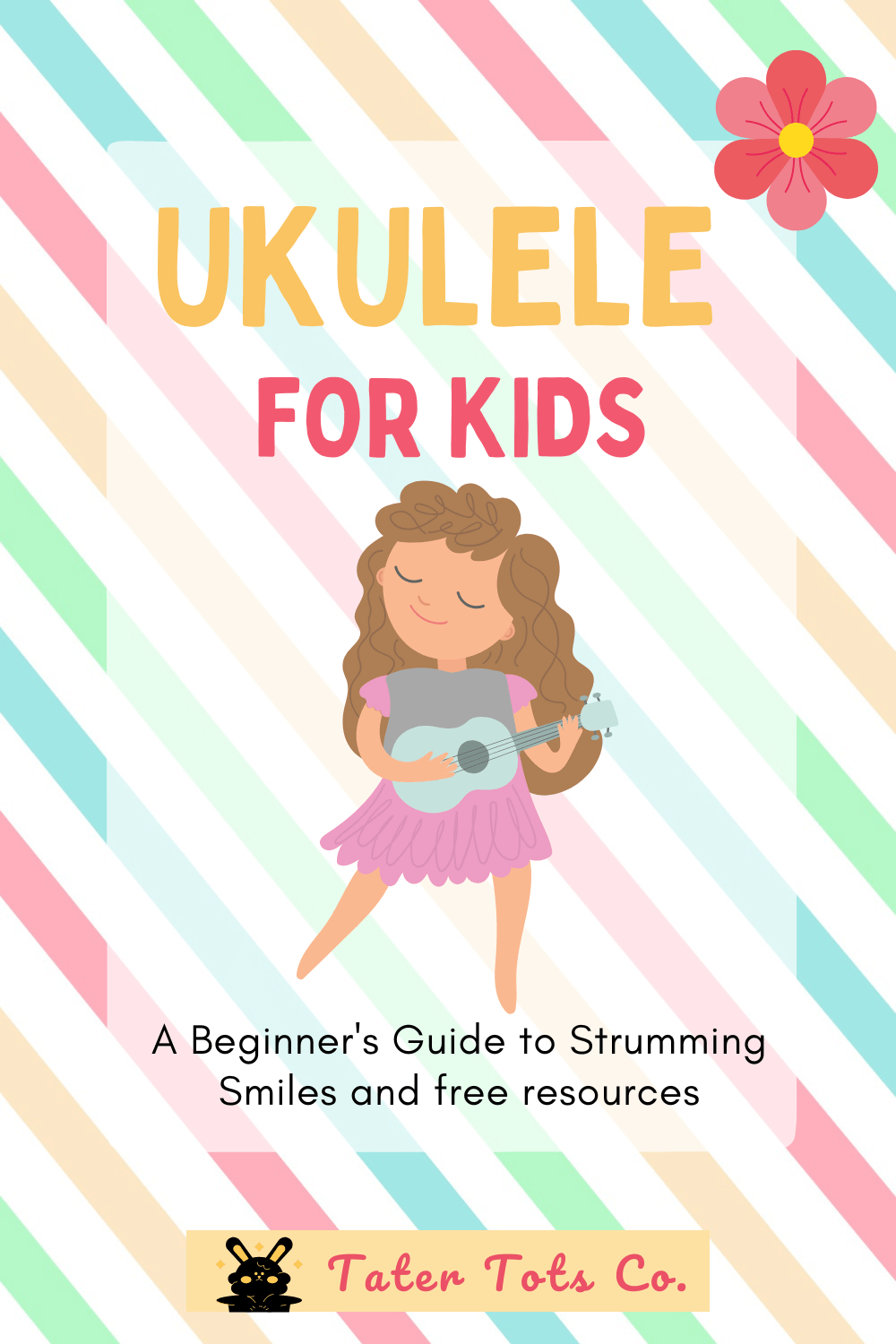
Ukulele for Kids (A Beginner’s Guide to Strumming Smiles and free resources)
Introduction
Teaching young kids how to play the ukulele can be a fun and rewarding experience for both the child and the teacher. Not only does it foster creativity and self-expression, but it also comes with many cognitive benefits. Studies have shown that music improves cognitive function and can have a positive effect on memory and attention span.
Moreover, it can help with the development of fine motor skills and hand-eye coordination. In this post, we will provide you with a complete beginner’s guide to teaching young kids how to play the ukulele.
We’ll cover everything from choosing the right ukulele to teaching basic chords and strumming techniques. You’ll also learn about the benefits of musical exploration for young kids and how it can help set them up for success later in life.
So why not pick up a ukulele and start strumming smiles with your little ones today?
Related Section and Articles
Super Simple And The Best Ukulele Songs For Kids
Compilation of the Top 15 Children Nursery Rhyme Songs with Free Printable Ukulele Chords
Have A Jolly Good Christmas With These All Time Favorite Super Easy to play Ukulele Christmas Songs
The joy of teaching young kids ukulele
Teaching young kids how to play the ukulele is an incredibly rewarding experience. Not only does it introduce them to the world of music, but it also brings immense joy and smiles to their faces. The ukulele, with its small size and easy-to-learn nature, is the perfect instrument for children to explore their musical talents.
As a teacher, witnessing the excitement and enthusiasm in their eyes when they strum their first chord or play a simple melody is priceless. It’s a magical moment that fills the room with happiness and a sense of accomplishment. The ukulele’s cheerful and vibrant sound resonates with children, instantly capturing their attention and sparking their interest.
One of the key benefits of teaching young kids the ukulele is that it cultivates a love for music from an early age. By introducing them to this versatile instrument, we open a door to a whole new world of creativity, self-expression, and emotional development. Music has the power to evoke emotions, boost confidence, and foster a sense of belonging, and it is through the ukulele that these young minds can experience these transformative effects.
Teaching young kids the ukulele helps in the development of essential skills. It enhances their hand-eye coordination, fine motor skills, and finger dexterity as they learn to strum, fret, and transition between chords. The rhythmic patterns and melodic sequences they practice on the ukulele also contribute to their cognitive development, memory retention, and problem-solving abilities.
Teaching young kids the ukulele is not just about the technical aspects; it’s about creating a positive and nurturing environment where they feel encouraged to explore their creativity. It’s about fostering their musical curiosity and allowing them to express themselves freely through the instrument. Whether it’s singing along to their favorite songs or composing their own melodies, the ukulele provides a platform for their imagination to soar.
In this beginner’s guide, we will delve into the world of teaching young kids ukulele, exploring effective teaching strategies, fun activities, and the best approaches to keep them engaged and motivated. We will also discuss the numerous benefits that come with musical exploration at a young age.
So let’s embark on this musical journey together, strumming smiles and nurturing the next generation of ukulele enthusiasts.
What is a Ukulele?
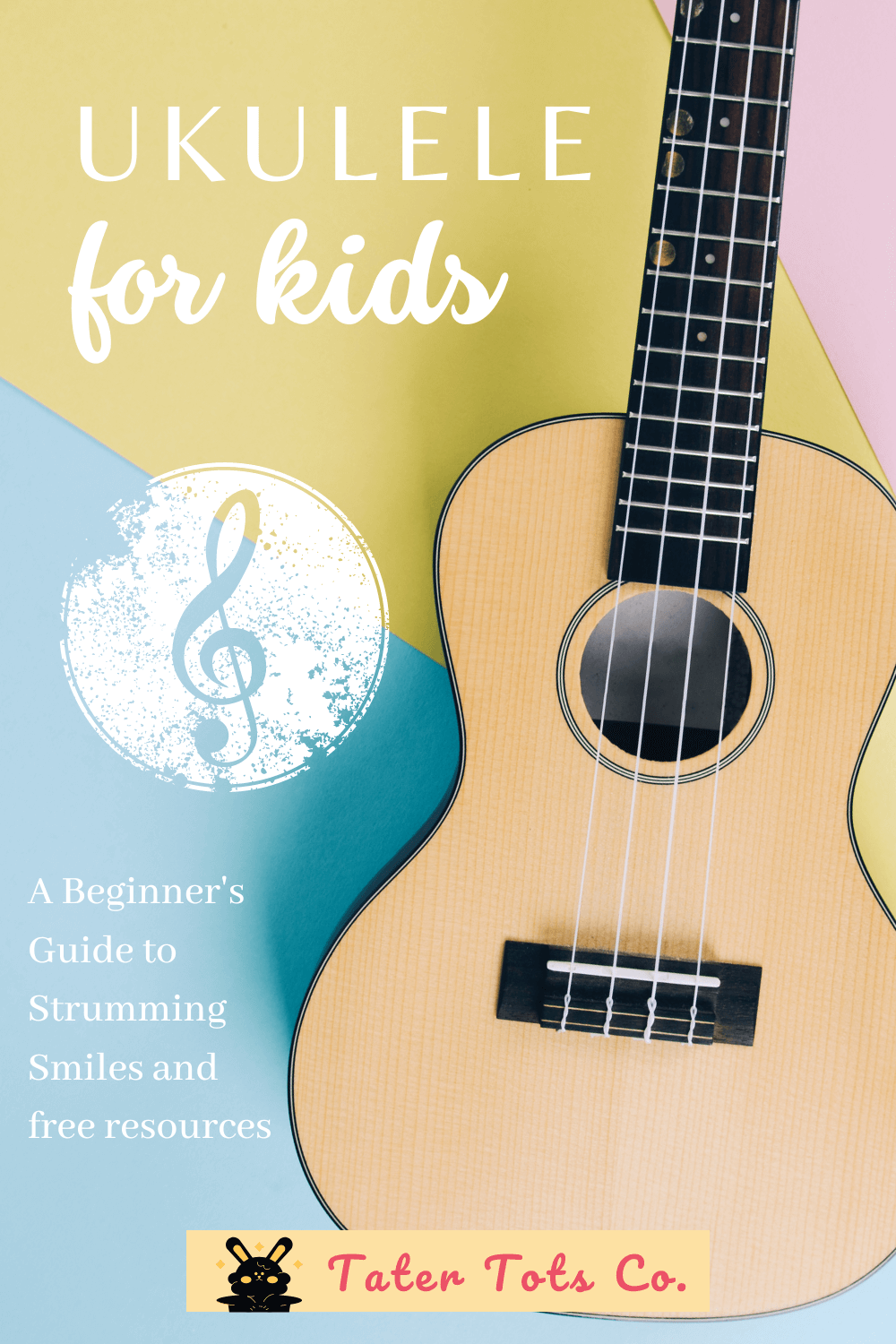
The ukulele is a small, four-stringed instrument that originated in Hawaii. It is a member of the lute family and is similar in appearance to a small guitar. The ukulele is known for its bright, cheerful sound and is commonly used in Hawaiian music, as well as in many other genres. It is a popular instrument for beginners due to its small size and relative ease of playing. There are several different sizes of ukuleles, including soprano, concert, tenor, and baritone, each with its own unique sound and playing characteristics. The ukulele has experienced a resurgence in popularity in recent years and is now enjoyed by musicians of all ages and skill levels.
It is small and lightweight, easy to learn and play, and makes a great beginner instrument for young kids.
The benefits of musical exploration for young children
Engaging young children in musical exploration offers a plethora of benefits that go beyond simply playing an instrument. The impact of music on a child’s development is profound and can contribute to their overall growth and well-being.
Firstly, learning to play an instrument, such as the ukulele, helps children develop their cognitive abilities. Studies have shown that music training can enhance a child’s memory, attention span, and problem-solving skills. As they navigate through chords, melodies, and rhythms, their brains are actively processing and organizing information, strengthening neural pathways in the process.
Furthermore, musical exploration promotes emotional expression and self-regulation in young children. When they strum the ukulele, they have the opportunity to channel their emotions and creativity into the melodies they create. This form of artistic expression empowers children to communicate their feelings, boost their self-confidence, and develop a sense of identity.
In addition to cognitive and emotional benefits, musical exploration fosters social skills and teamwork in young children. Playing an instrument often involves collaboration with others, whether it’s participating in a music class or forming a band. Through these interactions, children learn to listen, cooperate, and communicate effectively, all while sharing a common passion for music. This collaborative aspect of musical exploration helps children develop empathy, respect, and a sense of belonging within a group.
Moreover, engaging in musical activities has been found to enhance language development and literacy skills. Studies have shown that exposure to music helps improve phonological awareness, which is crucial for early language acquisition. Singing songs, rhyming, and learning lyrics can aid in vocabulary expansion, speech development, and even reading comprehension.
Lastly, the joy and sense of accomplishment that young children experience when learning to play an instrument cannot be overlooked. The ukulele, with its small size and simple chord structure, is an ideal instrument for beginners. As children strum their way through songs, they build a sense of achievement and develop a lifelong love for music.
From cognitive development to emotional expression, social skills, language acquisition, and personal fulfillment, the impact of music on their growth is immeasurable.
Choosing the right ukulele for kids
When it comes to teaching young kids how to play the ukulele, choosing the right instrument is crucial. Kids have smaller hands and may find it challenging to handle a regular-sized ukulele. That’s why it’s essential to select a ukulele specifically designed for children.
Firstly, consider the size of the instrument. Opt for a soprano or concert ukulele as they are smaller and more manageable for little hands. These sizes are also popular for beginners due to their comfortable size and ease of learning. The smaller scale length and fret spacing make it easier for kids to form chords and play melodies.
Next, pay attention to the construction and materials. Look for a ukulele made from lightweight materials such as laminate wood or plastic. This not only makes the instrument easier to hold but also ensures durability as kids may be less careful with their instruments. Additionally, a ukulele with nylon strings is highly recommended for children, as they are gentler on the fingers and easier to press down.
Consider the visual appeal of the instrument as well. Kids are often motivated by vibrant and attractive colors, so choosing a ukulele with a fun design or a bright finish can ignite their excitement and enthusiasm for learning.
Lastly, don’t forget to take price into consideration. As children grow and develop their musical skills, they may outgrow their first ukulele. It is wise to invest in a reasonably priced instrument that offers good quality to start with, and as their interest and proficiency grow, you can explore upgrading to a higher-quality ukulele.
By carefully selecting the right ukulele for young kids, you are setting them up for success and a positive experience in their musical journey. The instrument’s size, construction, materials, visual appeal, and affordability all play a role in providing a comfortable and enjoyable learning experience for budding ukulele players.
When it comes to choosing a ukulele for children, there are two main options to consider: the Soprano and the Concert Ukulele. For small children below 12 years of age, a Soprano Ukulele is a great choice. This type of ukulele is smaller in size, making it easier for little hands to hold and play. It’s also a good option for beginners who are just starting to learn the instrument. On the other hand, a Concert Ukulele is slightly larger and produces a deeper sound. This type of ukulele may be more suitable for older children or those who have some experience playing the instrument. Ultimately, the choice between a Soprano and Concert Ukulele will depend on the individual needs and preferences of the child.
Getting started: Basic ukulele techniques for beginners
Your child may not be able to play the Ukulele until at least 4 or 5 years old.
Getting started with teaching young kids ukulele can be an exciting and rewarding experience. As a beginner, it’s important to start with the basics to build a strong foundation for their musical journey. Introducing them to basic ukulele techniques will not only help them develop their skills but also foster a love for music.
Firstly, it’s essential to teach kids how to hold the ukulele correctly. Show them how to cradle the instrument in their arms, with the body resting against their chest. Encourage them to relax their shoulders and keep a comfortable posture while playing. This will ensure that they can strum and fret without any strain or discomfort.
Next, guide them through the proper hand positioning. Explain that the dominant hand should be used for strumming, while the non-dominant hand will be used to form chords and fret the strings. Encourage them to keep their fingers curved and place them on the appropriate frets to produce different sounds.
Teaching the basic strumming patterns is crucial for beginners. Start with simple downstrokes, guiding them to strum across the strings smoothly and evenly. As they become more comfortable, introduce upstrokes and various strumming patterns to add rhythm and dynamics to their playing. Emphasize the importance of keeping a steady tempo and encourage them to practice with a metronome or play along with their favorite songs.
Introduce a few easy chords to help kids start playing songs right away. Begin with simple chords like C, F, and G, which are commonly used in many popular songs. Teach them how to position their fingers on the frets to form the chords and guide them through transitioning between chords smoothly.
Remember to make the learning process fun and engaging. Incorporate games, songs, and creative activities to keep their interest and motivation high. Encourage them to explore different strumming patterns, experiment with their own melodies, and even write their own songs.
Learning to play the ukulele can have numerous benefits for young kids. It enhances their cognitive skills, improves hand-eye coordination, and boosts their confidence and self-expression. It also provides a creative outlet and promotes a sense of accomplishment as they progress.
With time, practice, and patience, they will develop their skills and strum their way to countless smiles and musical exploration.
Creating a fun and engaging learning environment
It’s important to remember that children learn best when they are having fun. By infusing playfulness, creativity, and excitement into the learning process, you can not only make the experience enjoyable for the kids but also enhance their musical abilities and overall development.
One way to create a fun learning environment is by incorporating games and activities into the lessons. For example, you can turn learning chords into a memory game, where children have to match the correct chord shape with its corresponding name. You can also introduce storytelling elements, where each chord becomes a character in a musical adventure. This not only makes the learning process more engaging but also helps children remember and apply what they have learned.
Another important aspect is to encourage creativity and self-expression. Provide opportunities for children to explore their own musical ideas and improvise. This can be done by allowing them to strum freely and create their own melodies or by encouraging them to write their own simple songs. By nurturing their creativity, you are fostering a sense of ownership and empowerment, which can greatly motivate young learners.
Incorporating visual aids and props can make the learning environment more stimulating. Use colorful charts or posters to display chords and finger placements. Bring in puppets or stuffed animals to act as musical buddies during the lessons. These visual and tactile elements not only add an element of fun but can also assist in reinforcing key concepts and techniques.
Finally, it’s important to maintain a positive and supportive atmosphere. Encourage and praise children for their efforts, no matter how small. Celebrate their progress and milestones to boost their confidence and motivation. By creating a safe and encouraging space, children will feel more comfortable taking risks and stepping out of their comfort zones, ultimately enhancing their learning experience.
Remember, when teaching young kids the ukulele, the goal is not just to teach them how to play an instrument but to ignite their passion for music and foster their overall development. By creating a fun and engaging learning environment, you can sow the seeds of a lifelong love for music in these young learners, while also reaping the benefits that musical exploration brings to their cognitive, emotional, and social growth.
Incorporating songs and games into ukulele lessons
Incorporating songs and games into ukulele lessons can make the learning process enjoyable and engaging for young kids. Music has a unique way of capturing children’s attention and fostering their natural curiosity.
By integrating familiar songs and interactive games, you can create a dynamic and fun learning environment that will keep your young students motivated and excited to strum their ukuleles.
One effective approach is to start with simple and catchy songs that children are already familiar with. Choose popular nursery rhymes, children’s songs, or even their favorite tunes from movies or TV shows. By selecting songs they already know, they will feel a sense of accomplishment when they can play along and recognize the melody. This familiarity also helps them develop a strong foundation in rhythm and timing.
Games can be an excellent way to break up the lesson and add an element of playfulness. For example, you can create a game where students take turns strumming a specific chord pattern while singing a song. This not only reinforces their chord knowledge but also encourages them to listen and coordinate their playing with their singing.
Another fun activity is to create a musical scavenger hunt. Hide small objects around the room, each representing a different chord or strumming pattern. The students can search for the objects and, once found, incorporate them into a song or a mini-performance. This game combines physical movement, problem-solving, and musical creativity, fostering a holistic learning experience.
By incorporating songs and games into ukulele lessons, you not only make the learning process enjoyable but also provide numerous benefits to young learners. They develop musical skills, improve coordination, enhance their listening abilities, and gain confidence in their own musical abilities. Moreover, these engaging techniques create a positive association with music, encouraging a lifelong love and appreciation for the art form.
Breaking down complex concepts into simple, understandable terms
When it comes to teaching young kids how to play the ukulele, it’s important to remember that they are just starting their musical journey. As a teacher, it’s your responsibility to break down complex concepts into simple and understandable terms that they can grasp.
One effective way to do this is by using visual aids and demonstrations. For example, when explaining different chords, you can show them diagrams or use your own fingers to demonstrate the positioning on the fretboard. This visual representation helps kids visualize the finger placements and understand how chords are formed.
Using relatable examples and comparisons can make learning more engaging and relatable for young learners. For instance, you can compare strumming patterns to the rhythm of their favorite songs or use familiar objects like a bouncing ball to explain tempo and timing.
You can also incorporate storytelling and games into the learning process can make it more enjoyable and memorable for kids. You can create stories around different musical techniques or use interactive games to practice chord transitions. This not only keeps them engaged but also helps them retain the information more effectively.
Remember, patience is key when teaching young kids. They may struggle with certain concepts or get easily distracted, but by breaking down complex ideas into simple terms and using creative teaching methods, you can help them grasp the foundations of playing the ukulele and ignite their passion for music exploration.
The role of repetition and practice in learning the ukulele
Repetition and practice play a crucial role in learning the ukulele, especially for young kids. Learning any musical instrument requires dedication and consistent effort, and the ukulele is no exception. As a beginner, it’s important to understand the significance of repetition and practice in mastering this delightful instrument.
Repeating exercises and practicing regularly not only helps to develop muscle memory but also improves finger placement and coordination. Learning to strum chords and play melodies requires precision and control, which can only be achieved through consistent practice. By repeating chord progressions, strumming patterns, and songs, young learners can gradually build their skills and develop a strong foundation in ukulele playing.
Moreover, repetition helps to reinforce learning and aids in memorization. By practicing a particular song or technique multiple times, kids can internalize the patterns and sequences, making it easier for them to recall and reproduce them in the future. This repetition not only enhances their musical abilities but also boosts their confidence in their own progress and capabilities.
It’s important to note that while repetition is valuable, it should be accompanied by a sense of enjoyment and creativity. Encourage young learners to explore different styles of playing, experiment with their own compositions, and have fun with the instrument. This balance between practice and creativity will keep their interest and motivation intact, making the learning process more engaging and rewarding.
Encouraging creativity and self-expression through music
Encouraging creativity and self-expression through music is one of the most valuable aspects of teaching young kids ukulele. Music has the power to unlock a child’s imagination and allow them to express themselves in ways they may not be able to with words alone.
When children are introduced to playing the ukulele, they are given a platform to explore their own unique musical style and create their own melodies. This freedom to experiment and create fosters a sense of confidence and self-assurance in children, allowing them to discover their own artistic voice.
Playing the ukulele also encourages children to think outside the box and develop problem-solving skills. As they learn different chords and strumming patterns, they are challenged to think critically and find creative solutions to create the sound they desire. This process of trial and error not only enhances their musical abilities but also develops their problem-solving skills that can be applied to various areas of their lives.
Music has the ability to evoke emotions and tap into a child’s inner world. It allows them to express their feelings and experiences in a safe and constructive manner. Whether it’s through playing a joyful melody or composing a heartfelt song, children are able to communicate their emotions and experiences through the language of music.
While fostering creativity and self-expression, learning to play the ukulele also helps children develop discipline and perseverance. It requires regular practice and dedication to improve their skills. By setting goals and working towards them, children learn the value of hard work and persistence, which are important life skills that can be carried into adulthood.
Nurturing a love for music and lifelong learning
Nurturing a love for music and lifelong learning is a priceless gift we can give to young children. Introducing them to the enchanting world of music through the ukulele can have a profound impact on their overall development and well-being.
When children are exposed to music at an early age, it ignites their curiosity, stimulates their imagination, and fosters a deep sense of creativity. Learning to play the ukulele allows children to express themselves in a unique way, channeling their emotions and thoughts into beautiful melodies. It becomes a means of self-expression and an outlet for their innermost feelings.
Beyond the joy of playing an instrument, learning the ukulele cultivates important skills that extend far beyond the realm of music. It enhances cognitive abilities, such as memory, attention, and problem-solving, as children learn to read sheet music, understand rhythms, and coordinate their fingers on the fretboard.
Playing the ukulele also promotes physical dexterity, motor skills, and hand-eye coordination. The intricate finger movements required to strum chords and pluck strings develop fine motor skills, enhancing their overall coordination and dexterity.
Additionally, learning to play an instrument instills discipline and perseverance in children. It teaches them the value of practice, patience, and the rewards that come from dedication and hard work. These qualities not only support their musical journey but also translate into other areas of their lives, fostering a growth mindset and a lifelong love for learning.
The ukulele provides a gateway to cultural exploration. It exposes children to various music genres, styles, and traditions from around the world. Through learning different songs and melodies, they gain a deeper appreciation for diverse cultures, expanding their horizons and nurturing their sense of empathy and understanding.
Other Ukulele Resources for Kids
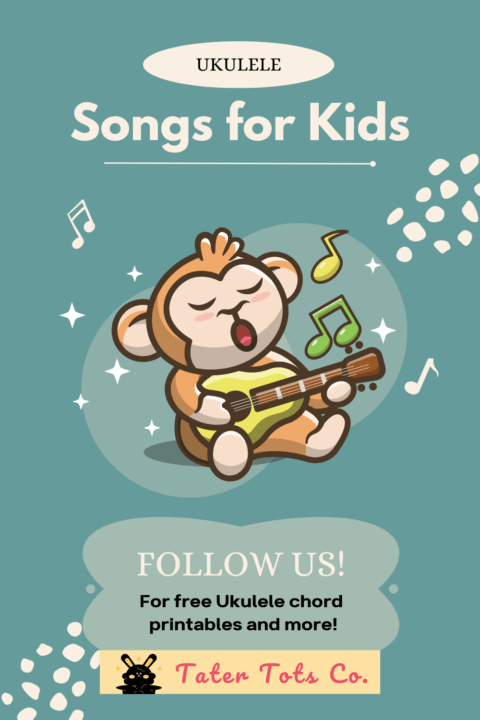
You can find lots of ukulele tutorials on YouTube or here are some recommended resources for young kids.
- Our Section on Super Simple And The Best Ukulele Songs For Kids provides a wide range of easy-to-play free ukulele printables for nursery rhymes and children’s songs that even beginners can play. With our resources, your child can learn to play their favorite songs on the ukulele in no time.
- Ukulele in the Classroom offers free printer-friendly teaching tools including lesson plan templates, quizzes, flashcards, and more
- Ukulele for Children: Building Music Literacy in Kids! provides original kid-friendly songs and memorable characters to inspire a love for music making and music reading
Conclusion
We hope you found our beginner’s guide to teaching young kids the ukulele and the benefits of musical exploration informative and inspiring! Introducing children to the ukulele at a young age can have a profound impact on their development and create a lifelong love for music.
The Ukulele is a great instrument you can consider investing in for many reasons. If your child is still too young to play the Ukulele, parents can learn how to play the ukulele and incorporate nursery rhymes into their daily routine.
What are your thoughts on introducing children to the ukulele? Do you have any tips or experiences to share with our readers? We would love to hear from you in the comments below!
Don’t forget to check out our section on Super Simple And The Best Ukulele Songs For Kids where you can download various children and nursery rhyme ukulele chord printables absolutely free!

Follow us on Facebook/Pinterest for the latest blog updates, freebies, and Ukulele printables.
[menu_in_post_menu menu=96 style=”list”]
Warmest Regards,